262K Courses, 833M Enrollments: Breaking Down Udemy’s Massive Catalog
From course ratings to pricing, let’s have a look at some of the discernible trends of Udemy’s catalog.
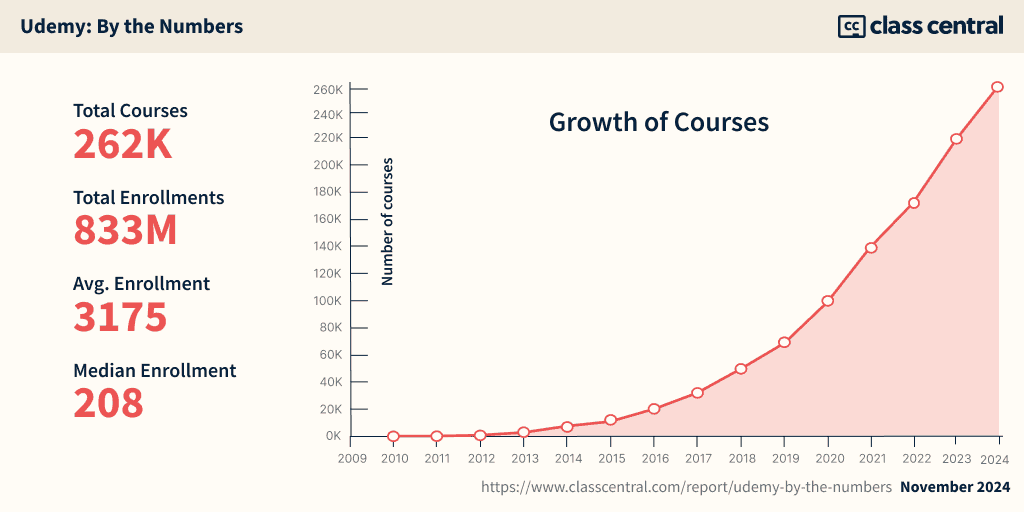
On Udemy, anyone can offer a course. Since the platform launched in 2010, this approach has turned Udemy into the world’s largest catalog of online courses: they now host 262,000 courses.
In 2024, according to the company, they have 75 million registered users.
In 2020, propelled by the COVID-19 pandemic, they raised $123 million and increased their valuation by over $1 billion. In 2021, the company went public, which gave us a peek at their financials.
In 2024, Udemy’s Q2 revenue of $194.4 million fell below its first-quarter revenue, marking the first time the company has experienced a quarter-over-quarter revenue drop. The primary culprit was Udemy’s Consumer revenues, which decreased from $79.2 million in 2024 Q1 to $73.8 million. In Q3, revenue clawed up to $195.4 million, made up of $126.1 Business (Enterprise) revenue and $69.3 Consumer revenue.
Surprisingly, despite its magnitude, Udemy’s catalog seems to have seldom been analyzed. If you are looking for course suggestions, here is our Udemy’s 250 most popular online courses.
So in this article, we’re going to break down Udemy’s numbers a little further. My colleague @Suparn collected data about the provider’s catalog. And with the Excel skills I (Dhawal) acquired a few years ago (albeit rudimentary), I dug into the data.
This analysis was first published in January 2021. In 2023, my colleague @Archisha re-ran the analysis on the updated Udemy dataset, and now, in 2024, it’s @Suparn’s turn to analyze the data. In 2024, here’s what we found.
Udemy By the Numbers
Course Categories
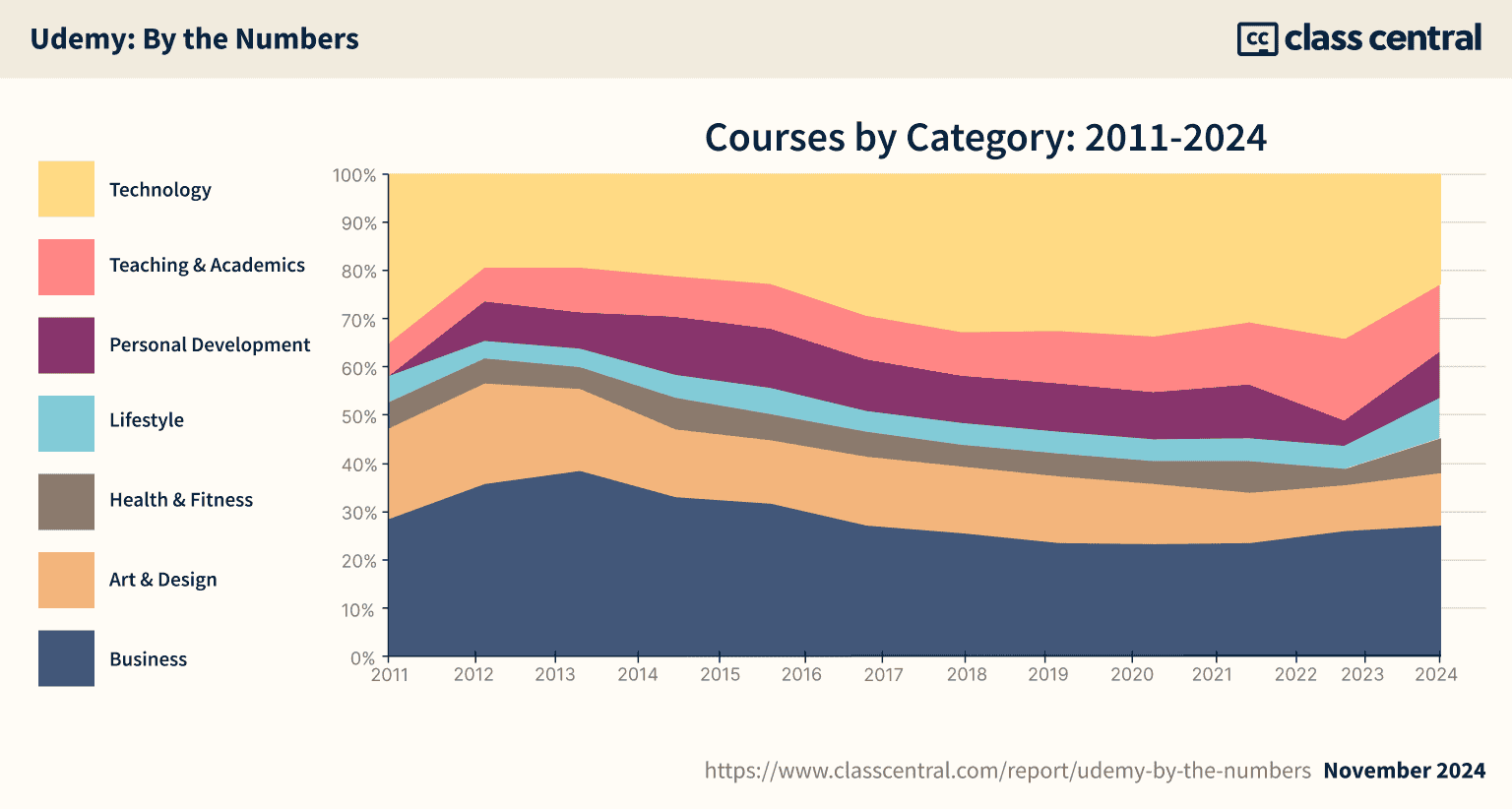
More than half of Udemy’s courses belong to the fields of Business and Technology, but they account for 75.8% of all enrollments, up slightly from 74.6% in early 2023.
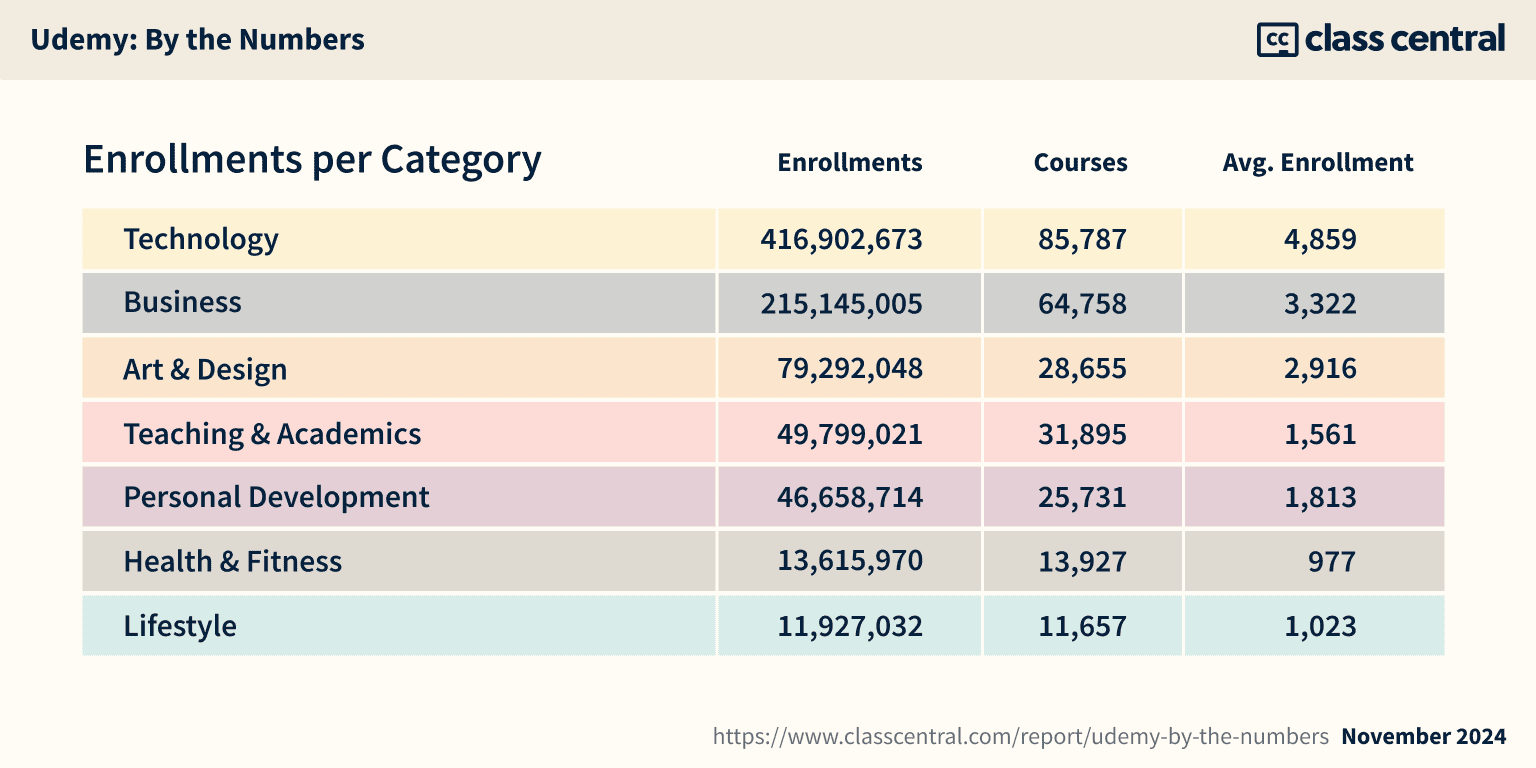
Technology courses are the most popular. They have on average 4,859 learners per course, well above the 3,176 average across the platform.
Course Length
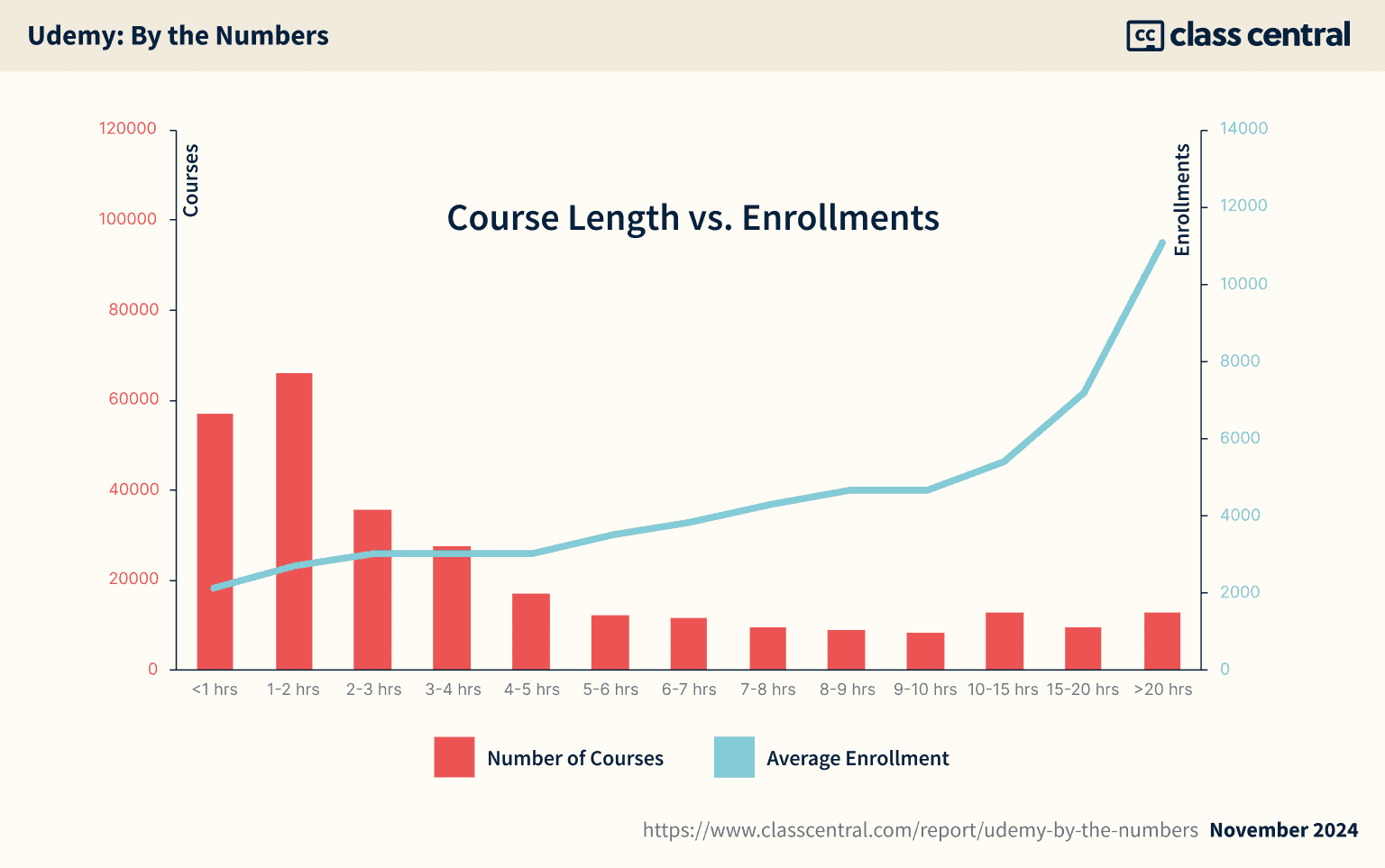
The average course length in 2024 is 4.69 hours, down from 7.7 hours in early 2023. This will be due to the large number of courses less than 2 hours long. Interestingly, the number of courses over 20 hours in length has ballooned from 6,000+ to 9,000+. The upshot of this is that the median length is now 2.25 hours, only a slight reduction from 2.3 hours in 2023.
As course lengths increase, average enrollments also increase: learners gravitate towards longer courses.
Courses less than 1 hour long have an average enrollment of 1,746, while courses 15–20 hours long have an average enrollment of 7,071. The average enrollment of courses longer than 20 hours is 11,913.
Course Price
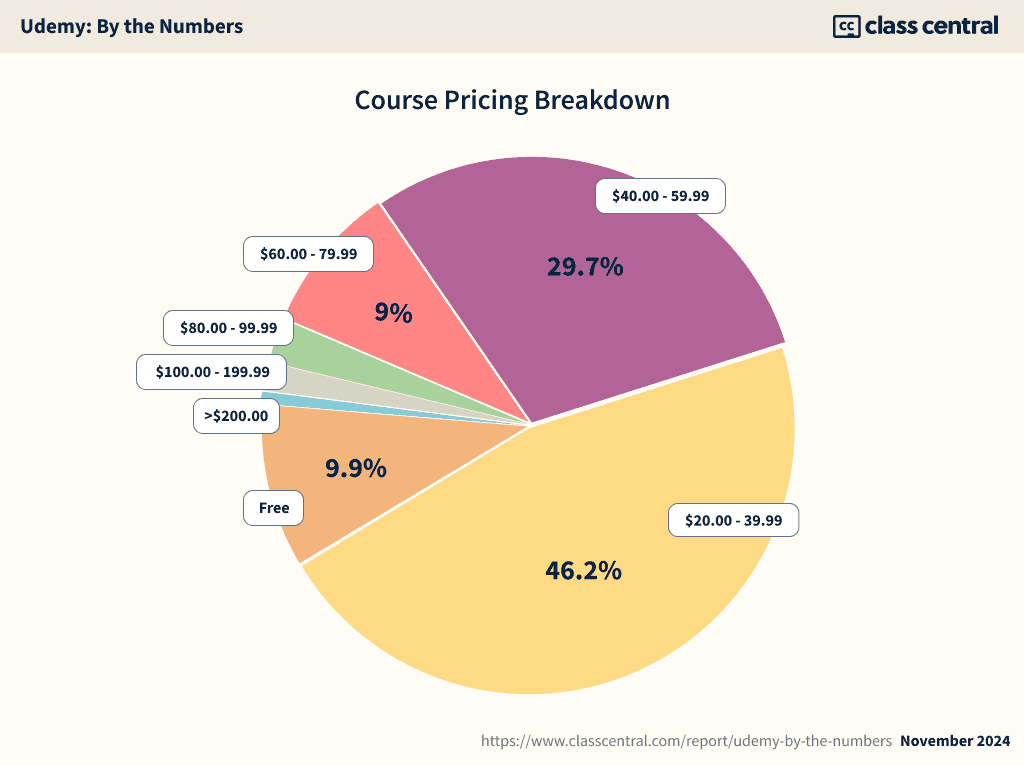
90% of Udemy courses are paid. Course prices range from $19.99 to over $200.00, but only 1% cost more than $200.00 (without any discounts or deals).
56% of Udemy’s courses are free or cost less than $40, while 3% cost more than $100. When we analyzed the data back in 2021, around 24% of the courses were more than $100.
The changes in the list price doesn’t mean that the actual price that learners pay has changed. Based on the data in Udemy’s 2021 annual report, the average price a learner paid was $20.40, while the lowest listed price of a course was $19.99. Similarly, in 2023, the average revenue per buyer was $18.60.
Udemy runs promotions bringing the cost of the courses down, though the frequency of these promotions has been reduced. It also localizes the prices in different markets, bringing the price down by a lot in low-income or emerging economies.
| Monthly Avg Buyers | Avg Revenue per Buyer | |
| 2023 | 1.38M | $18.6 |
| 2022 | 1.336M | $19.7 |
| 2021 | 1.345M | $20.4 |
| 2020 | 1.439M | $18.9 |
| 2019 | 0.962M | $19.5 |
As you can see below, average enrollments increase as the courses’ list prices increase. This doesn’t seem to conform to the traditional supply-demand pattern: higher prices resulting in lower enrollments. This can be because Udemy courses are rarely sold at list price. Some enrollments in more expensive courses may also be from monthly subscribers who can access 12,000+ top-rated courses from $20 per month in America and for lower prices in some other markets.
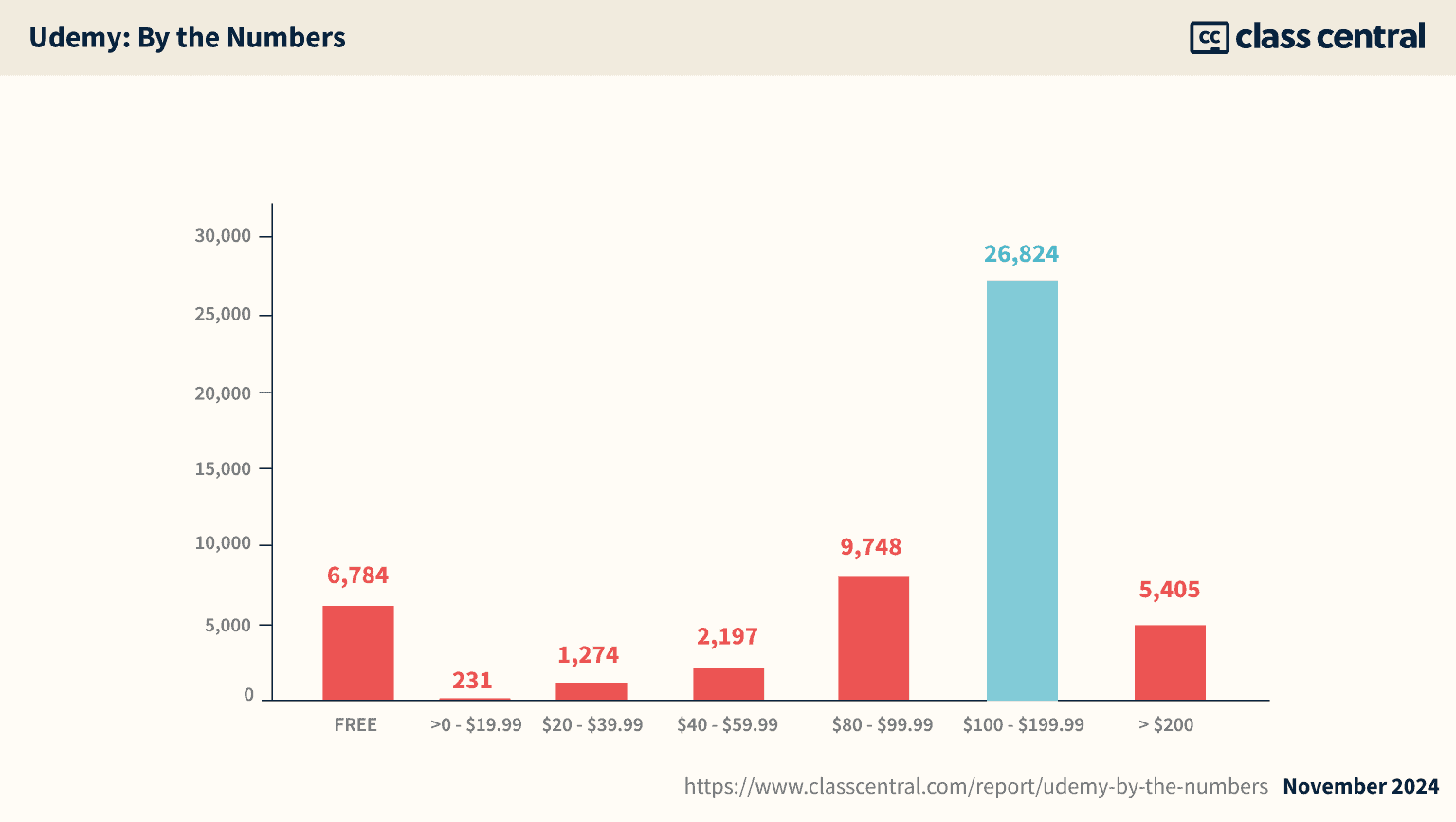
Course Language
Udemy courses are available in 74 different languages although more than half of all courses are offered in English. Here are the most common languages on the platform:
- English — 58.5%.
- Portuguese — 8.3%.
- Spanish — 7.9%.
- Turkish — 3.8%.
- Japanese — 3.7%.
Course Enrollments
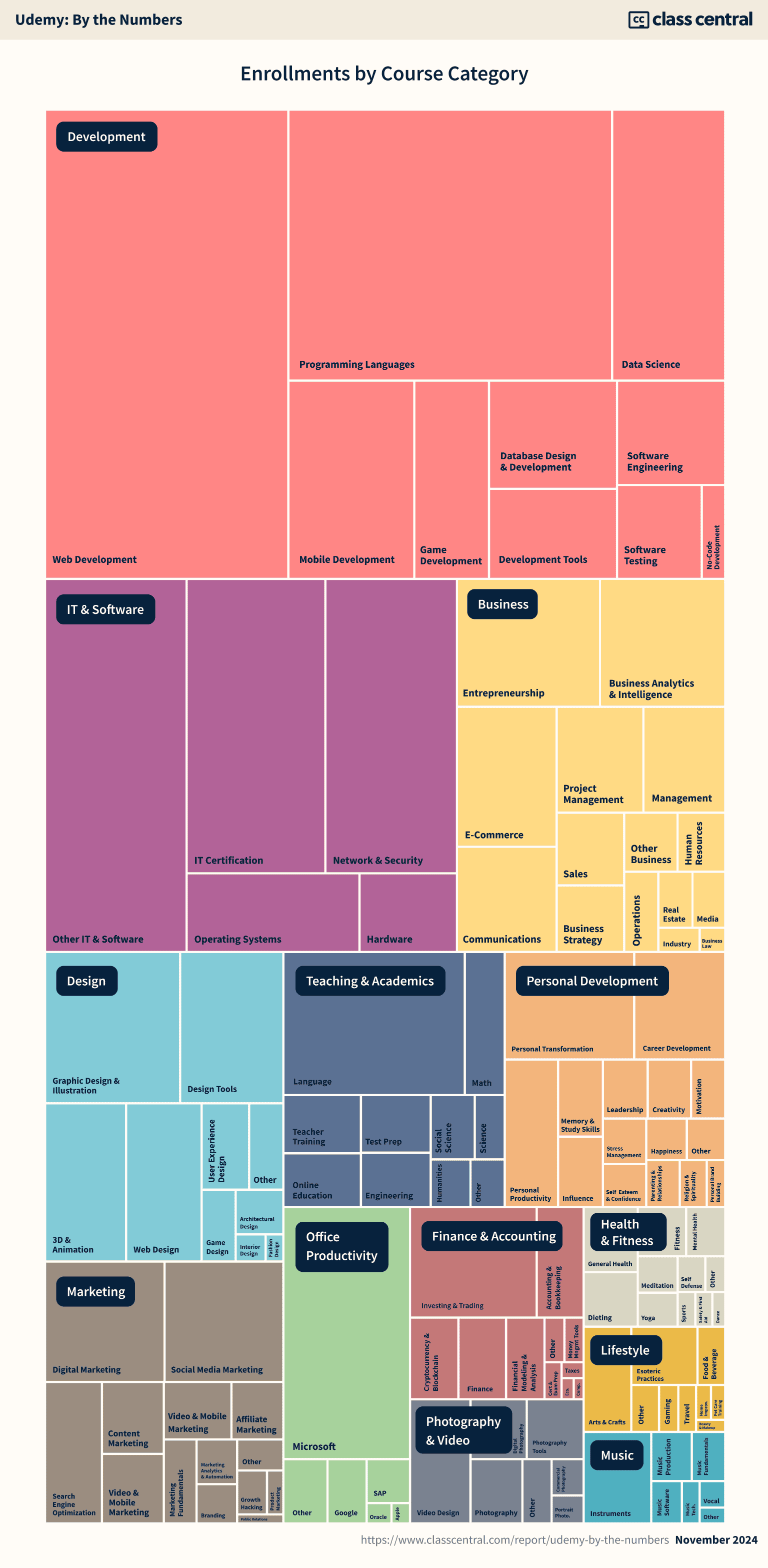
Combined, Udemy’s 262K courses have gathered over 833 million enrollments and average 3175 enrollments per course. What I found most surprising is that the median enrollment is only 208, which means that half of Udemy’s courses don’t reach 208 learners.
Currently, there are 904 courses with over 100K enrollments and 9 courses with over a million enrollments.
Do Udemy courses satisfy the Pareto 80/20 principle? I found that Udemy’s top-20% courses by enrollment account for 91.39% of all enrollments.
Course Ratings
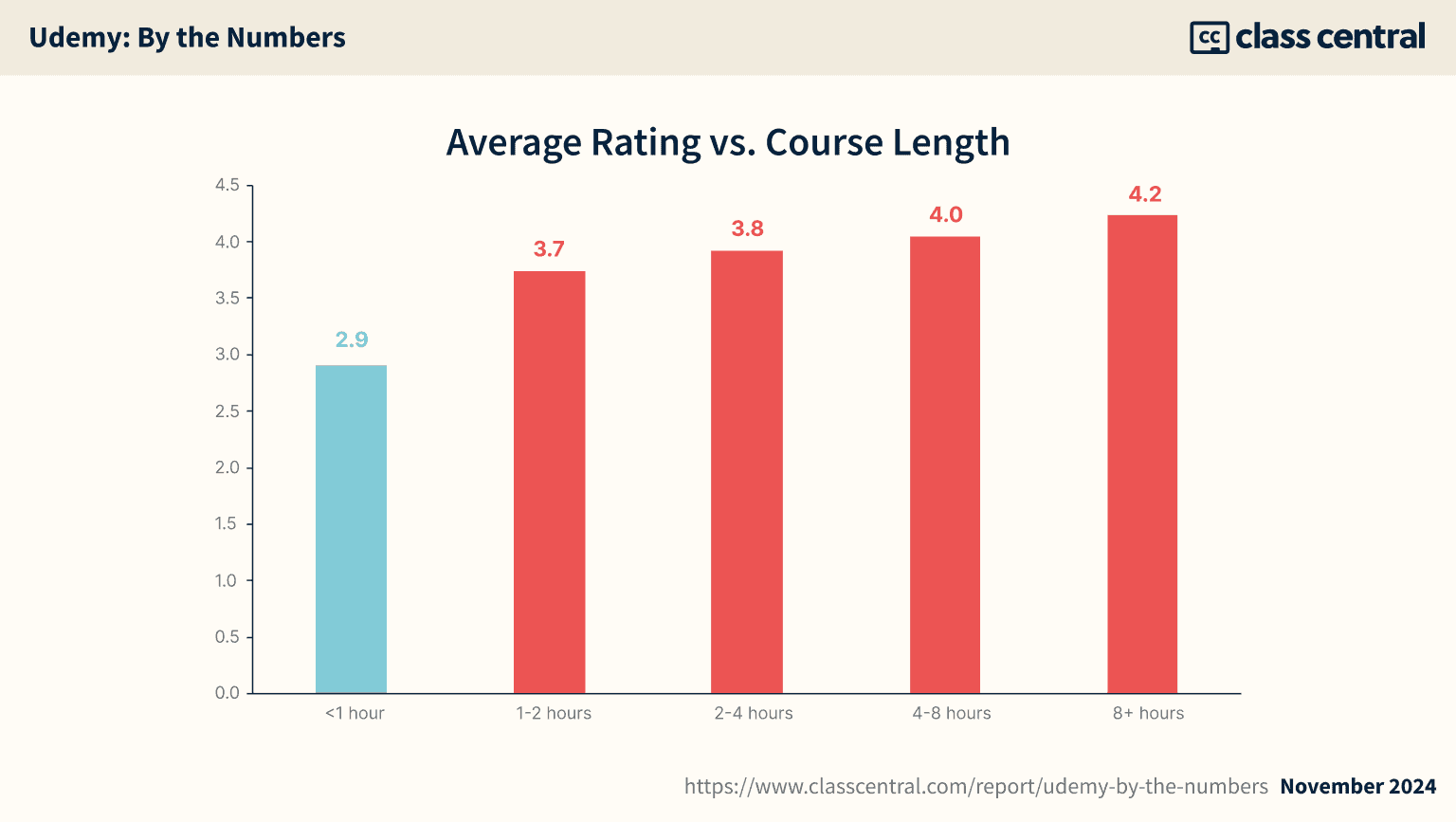
In total, Udemy courses have received more than 75.2 million ratings. Class Central’s analysis found that 39.3K of Udemy’s 262K courses have no rating at all.
Ratings tend to be heavily skewed towards the positive side. Over 62% of the ratings are 4–5 stars while 1–2 star ratings represent only ~1% of all the ratings.
We also noticed that the rating is correlated with the length of the course. It might be just that the longer courses might be high effort and more polished.
[1] We combined Development and IT & Software.
[2] We combined Business, Marketing, Office Productivity, and Finance & Accounting.
[3] We combined Design, Music, Photography & Video into Art & Design.
Tags

Dhawal Shah

Archisha Bhar








Mona
Hey Dhawal
Hope you’re well – happy new year!
This is a great piece of analysis. We’re wondering if you know whether the Udemy for Business enrolments get counted in their total course enrolments?
Best
Mona
Dhawal Shah
Hey Mona! Unfortunately it is not clear whether Udemy for Business enrollments are included or not.
Even if they are included, I am not sure they would make an impact to these numbers. Based on $100 million/year in revenue and $360/year plan, enrollments might be in single digit millions in the best case scenario.
Vincent Goln
Could you please explain the source of your data? How did you get hold of the entire Udemy catalogue?
Dhawal Shah
We collected the data via their API.
Greg
Very nicely done — that’s exactly the right way to do it.
Divya
Can a researcher on MOOC development get access to API from let’s say Coursera, Udemy? Stats are convincing- I wish such data could be kept open for PhD scholars like me. Any suggestions here?
Mark
Head over to their Affiliate API, log in and request an API key. The rest is just Python. However, I wonder whether this analysis comprises all 200’000+ courses as the API request count is only 10’000.
Alison Lands
Wondering if there’s a way to get one of your amazing spreadsheets of that top 20% courses by enrollment – could be of value to the aspiring course creators out there to know what plays with platform users (or to observe creators / creator patterns that push up enrollment). Really insightful analysis – thank you!
A Nonymous
Hi,
Nice article. When Udemy started, they used to pay a high share to their instructors. Currently the instructor cut has dropped significantly. I am also a published instructor but I’ve lost interest in publishing new courses because Udemy takes 65% of the revenue just for hosting my hard produced course.
I suggest you to do some research about this phenomena and write about it.
Regards,
A Nonymous